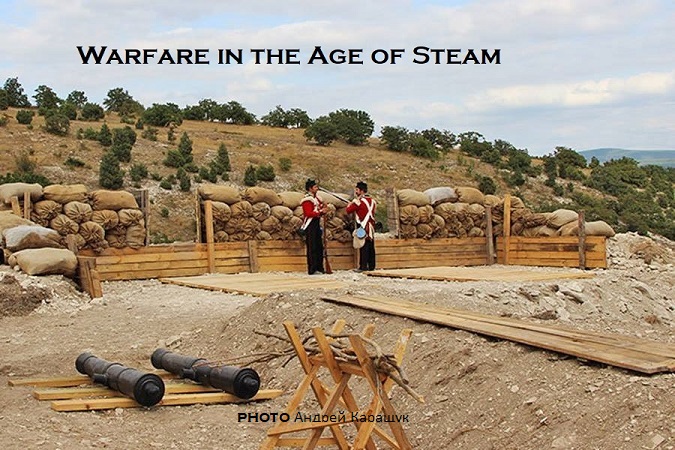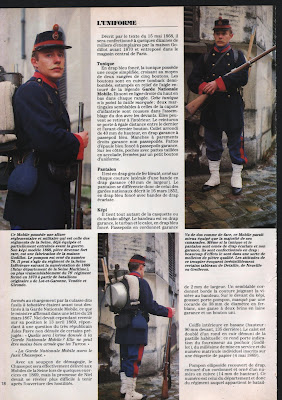Friday 6 August 2010
'Les Turcos'
Wounded Turco bugler
Turcos at Reichshoffen
 The Turcos distinguished themselves at Reichshoffen being celebrated in song and monuments - they suffered huge casualties attacking German artillery - here's an image from a great page of pictures from this battle.
The Turcos distinguished themselves at Reichshoffen being celebrated in song and monuments - they suffered huge casualties attacking German artillery - here's an image from a great page of pictures from this battle.The 2nd Turcos lost 93 % of their number.
Reichshoffen celebrations
Also for the anniversary this is in the news, a film about a forgotten Turco
French Cuirassiers of the Guard at Metz 1870
 I think in answer to some of Scott's thoughts on the Franco-Prussian war reenactment scene is that it is in a difficult place being sorted of squeezed by ACW and Napoleonic. Also the fact that there is no big high profile event taking place regularly like say the Alma or Koeniggratz makes a steady progress difficult. I do think it is a popular period and I think more people would get into it if there were reliable events to participate in.
I think in answer to some of Scott's thoughts on the Franco-Prussian war reenactment scene is that it is in a difficult place being sorted of squeezed by ACW and Napoleonic. Also the fact that there is no big high profile event taking place regularly like say the Alma or Koeniggratz makes a steady progress difficult. I do think it is a popular period and I think more people would get into it if there were reliable events to participate in.
Thursday 5 August 2010
Reenactment on the heights of Spicheren
 This page has photos of a Franco-Prussian war reenactment in 2004 of the action.
This page has photos of a Franco-Prussian war reenactment in 2004 of the action.
Battle of Spicheren

Took place today. Wiki on this Franco-Prussian war battle also called Forbach here
This image shows Bruno von François who was killed leading his men.
This site on the battle is worth visiting with plenty of images.
Wednesday 4 August 2010
ZOUAVE: WARFARE IN THE AGE OF TRANSITION 1861-1871
SENTINEL OF THE ZOUAVES BEFORE SEBASTOPOL.

Winter indeed—and winter in an enemy's country ! Snow everywhere —snow in the sky and on the earth ; snow on the hills and in tho valley— on the fragile tent and on the substantial city ; snow on guns and guncarriages ; nay, even on the shaggy coat and dark capote of that grimlooking Zouave sentry, who seems to defy the weather even as he does the foe. Brave souls ! how many associations of glory and of mirth, of reckless daring and heroic contempt of death, of ready wit and neverfailing resource, of cheerfulness under privation, and gaiety under fire, of strange contrasts and quaint fraternizations with eccentric " insulars;" how many a reminiscence of camp-fire revelries, of furtive foragings and extemporaneous cuisines, dear to the heart of Soyer, spring up at the very mention of the name of Zouaves ! Methinks even now I see their strange yet picturesque costume, their ample beards and closely-shaven polls, their swaggering gait, their quick intelligent eye, their air of latent devilry, and look of epicurean insouciance. Who, that has once seen, shall yet forget the ever-varying humours, the salient characteristics, of these enfants gates of the French Army, who unite the contrasting qualities of the sons of civilisation and of the children of the desert—equally prepared with the bayonet and the repartee, the bullet and the bon-mot; at once the staunchest of friends and the sternest of foes, and always first in the fray and latest at the feast ?
Fair reader, your gentle bosom warms with the tenderest emotions of charity and compassion as you contemplate that solitary soldier, exposed to the harsh inclemency of the winter's night; but take comfort, a short space more and he will be relieved; a little while and the pot-au-feu will be removed from the blazing embers of the camp-fire, and, as he discusses its savoury contents in the society of a few of the choicest spirits of the regiment, cold and hardship will be alike forgotten amidst the enlivening strains of the chanson-a-boire, in which "Papa Nicholas" is relegated to a locality where the thermometer never falls within many degrees of zero.
Rifle Pits
Simpson, William (artist)
Rifle pits appear in a lot of accounts of the Crimea on both sides. I suppose they are the beginnings of trench warfare. This image shows one very well indeed.
This description of the above image
is in this book by George Brackenbury and William Simpson
NOW PART OF THE BRITISH ADVANCED TRENCHES, ON THE LEFT OF THE RIGHT ATTACK, OR GORDON'S BATTERY.
This is one of the pits which was taken on the night of the 19th April, when Colonel Egerton was killed ; it is in the hollow between Gordon's Battery and the Redan, quite close to the Woronzoff Road. In the foreground of the drawing a group of men is seen busily engaged in filling sand-bags for the purpose of converting the pit into a trench, and connecting it with the rest of our works. In this service they are protected by a sharp fire from our rifles, directed through loop-holes menages in the parapet with sand-bags. The Russians are not ignorant of what is going on, and several round-shot lying on the ground, one of which has knocked over a gabion, and a shell bursting close to the right extremity of the work, prove how anxious they are to impede the operation. The capture of this rifle-pit is thus described by Mr. Russell:—
" Last night a very gallant and brilliant little feat of arms, attended, I regret to say, by severe loss, was performed by the 77th Regiment in front of our right attack. There is nothing more remarkable in the active operations of this siege than the importance of the part played by the sharpshooters placed in those rifle-pits, which have been dug by the enemy, and which were constructed with great skill and daring, and have been defended with vigour and resolution. The pits now constructed are complete little batteries for riflemen, and the fire from one well established, within 600 or 700 yards of a battery of ordnance, is sufficient to silence the guns, and keep the gunners from going near the embrasures. In front of the Kedan, opposite our right attack, the Russians established some capacious pits, from which they annoyed us considerably, particularly from the two nearest us on the left-hand side. Our advanced battery, when it opened, would have been greatly harassed by this fire, and it was resolved to take the two pits, to hold that which was found most tenable, and to destroy the other. That service was effected last night. About eight o'clock the party of the 77th under Lieutenant-Colonel Egerton, supported by a wing of the 33rd under Lieutenant-Colonel Mundy, moved down the traverses towards the rifle-pits. The night was dark and windy, but the Russian sentries perceived the approach of our men, and a brisk fire was at once opened on them by the enemy, to which the troops scarcely replied, for, firing a terrible volley, they rushed upon the enemy with the bayonet, and after a short but desperate struggle, drove them out of the two pits and up the slope behind them. Once in the pits, the Engineers, Officers, and Sappers and Miners, set to work to strengthen the defences, and threw up a gabionade in front, and with great coolness and courage proceeded to connect the trench of the nearest of the rifle-pits with our advanced sap." The enemy kept up a heavy fire of round, grape-shot, and shell upon them, and about two o'clock in the morning made a desperate but ineffectual attempt to regain the pits.
" It was while setting an example of conspicuous bravery to his men that Colonel Egerton fell mortally wounded. The rifle-pit is now in our hands, and a smart fire is kept up from it. Its fire is most serviceable, not only against the embrasures of the Redan, but in reducing and disturbing the fire of the Russian rifle-pits on its flank."
The next morning the other rifle-pit, captured after a feeble resistance, was levelled and filled in with earth.
Tuesday 3 August 2010
Czech Republic ACW reenactment
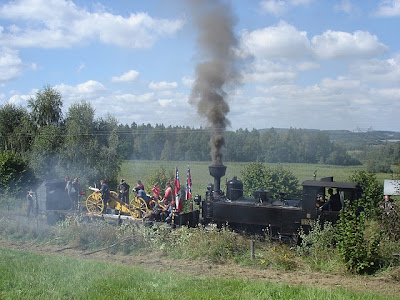 Thanks to Scott (I LIke the Things I like blog) for finding this selection of photos of a reenactment where they have a steam train to play with. Cool.
Thanks to Scott (I LIke the Things I like blog) for finding this selection of photos of a reenactment where they have a steam train to play with. Cool.Apparently they are recreating the Seven Days Battles, Battle of Savage's Station. Virginia, 29. 6. 1862
Monday 2 August 2010
Battle of Königgrätz 1866 Reenactment
Siege of Antwerp 1832
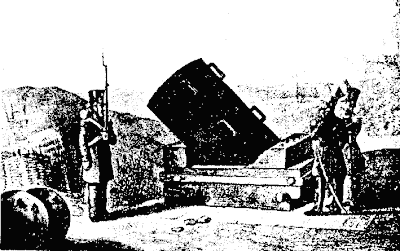 I didn't know about the Siege of Antwerp which the French participated in. They tested out Paixhan's Monster Mortar during the siege which took place against a Dutch garrison. I found this on Google books
I didn't know about the Siege of Antwerp which the French participated in. They tested out Paixhan's Monster Mortar during the siege which took place against a Dutch garrison. I found this on Google booksThe Siege Of Antwerp, 1832.— The king of Holland having refused to evacuate the citadel of Antwerp, in conformity with the terms agreed on by the powers which had arranged the separation of Belgium from Holland, the French, under marshal Gerard, advanced upon the place in the autumn of 1832, to the number of 70,000. The citadel was defended by general Chasse: and 45,000 men. The besiegers broke ground on the 29th of November; and on the 24th of December the place surrendered. General Chasse behaved with great valour, and was eventually left with no roof to protect him : but military men regard the defence as wanting plan, although every Dutchman appeared to do his duty during the contest. The Dutch lost 500, and the French 200 men.
10 Days War of 1831


Was looking for stuff on the Belgian Revolution and came across this old blog posting of mine from 2005.
History is a very geographically related subject; just to prove it, this must count on an international basis, as the most obscure period reenacted - the 10 days war of 1831 - in the Low Countries. Chances are, like me, you've never heard of it and I don't suppose many people out of the area know it at all but it does look pretty.
The group doing it are here http://www.vlgn.nl/index.php?lang=nl
For further information on this refreshingly short and sweet war go here http://www.nationmaster.com/encyclopedia/Belgian-Revolution
and http://www.zum.de/whkmla/military/19cen/tiendaagse.html
I think it's great and wish them well - in fact I think we in Britain should form two societies to do this - and then both societies can hate each other and have nothing to do with one another
Kinburn 1855
 Presumably there must have been a land aspect to the battle of Kinburn. Its mostly famous as a naval action.The top image is of Russian prisoners.
Presumably there must have been a land aspect to the battle of Kinburn. Its mostly famous as a naval action.The top image is of Russian prisoners.There's a detailed account in this 'Pictorial history of the Russian war' on Google books.
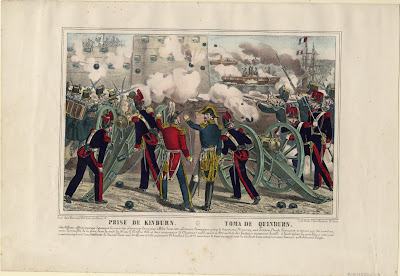
Sunday 1 August 2010
Historic photos of 19th century Europe
Phil Sheridan and the German army
More Beaucé

